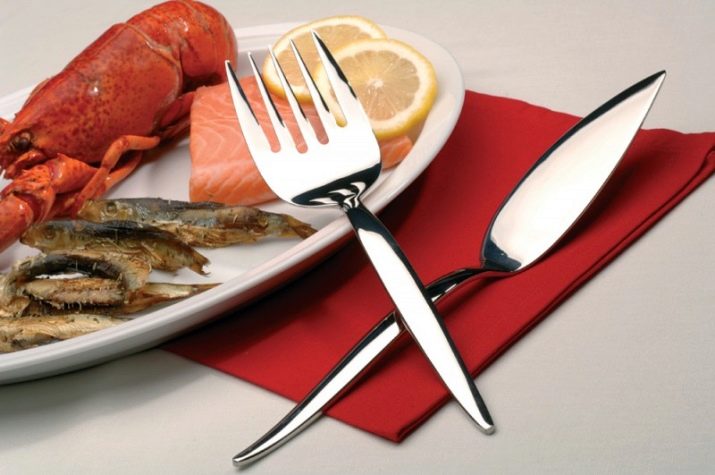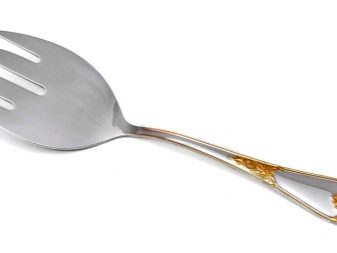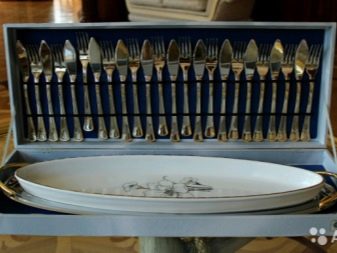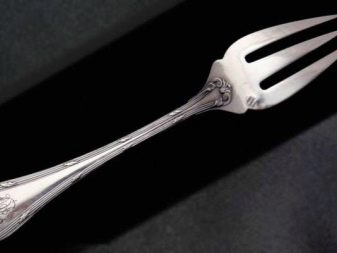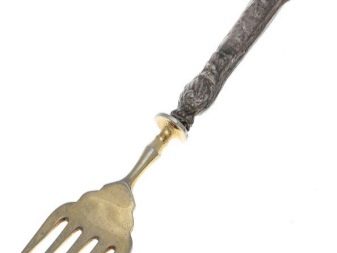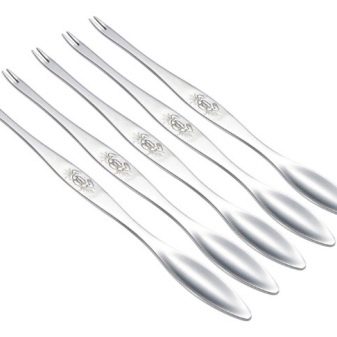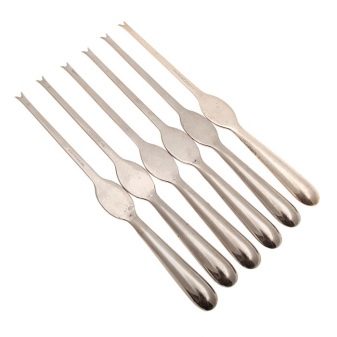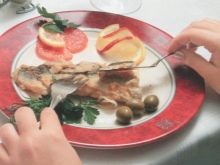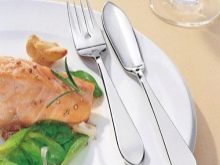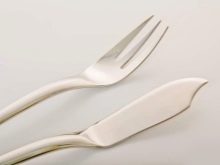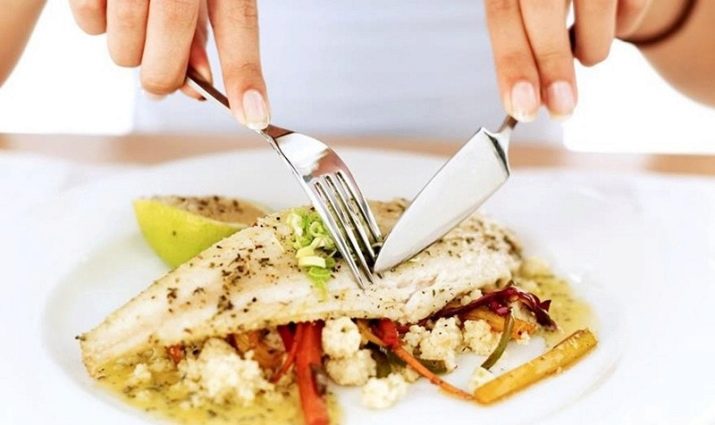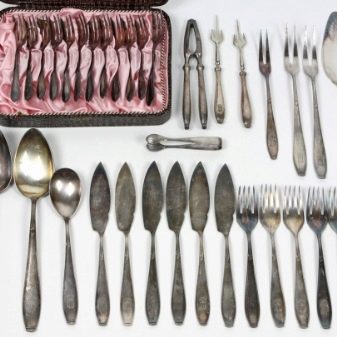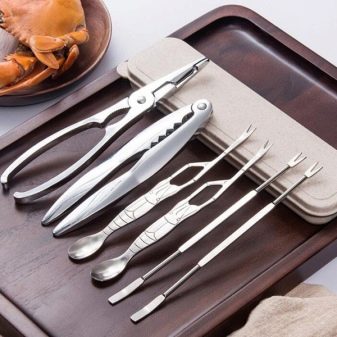Rules of conduct at the table involve the use of a certain number of cutlery. Trying to determine the purpose of a particular subject, one may encounter certain difficulties. Nevertheless, in modern society, a person needs knowledge of the purpose of different cutlery. If fish dishes are present at the gala dinner or dinner, then for them when setting the table forks will be included forks for fish.
What does it look like?
Initially, the fork for fish had only three teeth, rather wide and not sharp. In length, it is significantly shorter than the classic ordinary fork, its handle is wider and flatter.
Now they can also make forks for fish with four teeth. But it is still impossible to confuse with a conventional fork, since the teeth are shorter, and to make it easier to remove the bones, there is a characteristic slot in the center.
For serving the same use both options forks.
Initially, the sets in which the fish forks were present consisted of a significant number of items. They were available only to the elite strata of society. Therefore, they were made of valuable metals and their alloys. Silver and even gold dinner sets were distributed among the aristocracy.
Now you can also buy such exclusive sets, however, those made of stainless steel are becoming more widespread. Handles can be decorated with various patterns and gold or silver plating.
Varieties
Although the fish fork is often replaced with a canteen, at large events and official dinners it is present in the serving. They decided to use not only fish dishes, but also seafood, as well as canned fish.
- Chill forks (fr. Sink). In France, special metal utensils for hot fish dishes were called chills. In it, and cooked, and served food to the table. Accordingly, the fork from which this dish was served became known as chill. In fact, it is the main cutlery for fish treats. This is the same fork with short teeth and a notch for bone extraction.
- Fork for canned food. Special auxiliary device. With the help of it, they do not eat, but transfer pieces of fish from a common dish to their plate. It is a stylized fork-spatula with five teeth, which are interconnected along the edge. Thus, the excess oil passes through the slots, and the wide base helps to gently pick up and transfer a small whole fish or a piece to the plate.
- Two-horned As the name implies, this device has two cloves, long and sharp. Designed for cold fish snacks, you can chop pieces of herring or red fish and transfer them to an individual plate.
- For the sea cocktail. Fork in the form of a trident. The teeth are twisted to the center. And there are other options for this fork. For example, the device intended for mussels and oysters has a thickened left clove so that it is more convenient to separate the flesh from the shell. Crawfish, crabs and shrimps are served with a two-pronged long fork.
And for butchering lobsters there is a double-sided blade. At one end it is sharp, they cut the shell and remove the meat from the claws. The other one is blunt and has the shape of a scapula for extracting juice.
How to use?
Chill forks are usually served in tandem with a fish knife. With it you can aesthetically and comfortably carve the carcass.When serving the fish fork is placed on the left, the second in a row after the table fork. The fish knife is also second, but to the right, immediately after the table knife.
The fish knife has the shape of a scapula. It is not sharp, there are small depressions on the edges at the edges. The knife is not designed for cutting, it only helps to separate the fillets from the bones. If the fish knife is not on the table, then it is allowed to use, instead of it, one more fork - fish or dining room.
Since the devices for fish are diverse and can be served in different ways, the rules for their use are slightly different.
So, if in the serving there is a set consisting of a fork for fish and a fish knife, the fork is taken in the left hand, and the knife in the right. As mentioned earlier, the knife is not cut, but only carefully separate the bones from the fillet, holding the piece of fish with a fork.
First, it is necessary to eat meat from the top of the fish, then you can gently turn the portion of the piece and proceed to the other side.
Fish bones often have small bones, even if you are served processed fillets. Such bones can not be pulled out with your hands - this is a violation of the rules of etiquette. If you suddenly feel a fish bone in your mouth, then you need to gently move it with your tongue to your lips and remove it from the mouth with a fork. Then it can be shifted to the specially designed dishes or on the edge of your plate.
If, when setting the table, the fish knife was replaced with a classic table fork, then the fish fork is placed on the right side of the plate. Since it now performs the function of a fish knife. Thus, in the left hand there is a table fork, and the fish fork separates the meat from the pits. The portion of the pieces to bring to his mouth put the device in his left hand.
There are cases when fish dishes are served, and there are no special appliances. Then it is difficult to figure out which fork to use for these dishes. If this happens, then it is permissible to use a regular fork and a slice of bread. Bread we take in the left hand and hold the fish on a plate, and with a table fork we divide it and send portions into the mouth.
All of the above methods comply with the rules of etiquette and will give confidence at the solemn feasts. However, they are suitable for hot fish dishes.
There are small nuances when serving cold pickled or salted fish appetizers, such as salmon, sturgeon, herring. In this case, in order to cut the fish, take the usual knife for snacks. The thing is that the carcasses of these species of fish are pretty tough. A snack knife is located on the right side of the plate, at the very end of the serving set.
A variety of fish dishes led to the emergence of a wide range of cutlery: various tongs, skewers, knives, spoons.
All of them will help to beautifully and conveniently eat all kinds of delicacies of fish.
See the following video on how to eat fish in a restaurant.

